- Home
- Paul Doherty
Mathild 03 - The Darkening Glass Page 2
Mathild 03 - The Darkening Glass Read online
Page 2
I finished this part of my own harrowing of hell on the eve of the Annunciation, when dying winter meets a strengthening spring. The scenes took me back to my chronicle, to that time of blood so long ago, that egg-ripe Easter of 1312, when a hideous massacre on the ghost-haunted wastelands outside York ushered in a season of murderous betrayal.
Chapter 1
Dearest and most powerful lady.
By the spring of 1312, my mistress Queen Isabella was on the verge of full ripeness. Sixteen summers old, she had matured rich and fertile, a fairy-tale Queen from the romances she so ardently read. A beautiful woman, tall, willowy and slender, her face as perfect as an angel, with lustrous blonde hair, rose-kissed lips and eyes that could dazzle with life. Strange eyes, light blue and sloe-shaped, a legacy from her Navarrese mother. Isabella presided over a court in chaos. The great earls were in fierce rebellion against Gaveston, the king’s favourite, who had been created Earl of Cornwall and placed at the right hand of the power. Gaveston’s banner, a gorgeous red eagle, its wings spread, constantly fluttered over the English court and sparked the flames of civil war. The great earls assembled in this church or that, hands extended, to swear the most sacred of oaths that Gaveston’s banner and coat of arms must be reversed, torn and ground into the dust. Thomas, Earl of Lancaster, cousin of the king, and the other Great Lords whistled up their levies and, with banners displayed, marched on London, only to find that the king and his hen-groper – as the great earls mockingly called Gaveston – had fled north to the fastness of York. King, queen, favourite and their households sheltered at the Franciscan friary opposite St Mary’s on Hetergate, which lay between Castlegate and the river Ouse. The Franciscan house was a splendid sprawling complex of buildings around a stately church with a lofty bell tower. I still recall its nave and sanctuary, places of hallowed light, with their altars to the Resurrection and the Trinity, all shrouded in the glow from a thousand tapers. How can I forget, when that house of God soon became the haunt of murder? Most of the royal servitors lay quartered in other establishments, stretching from Bootham Bar to Fishergate; my mistress and I, however, occupied the Arcella chambers above the main cloister garden of the friary.
Isabella had changed, and so had I. A few years older than the queen, I was now recognised as a lady of the inner household, the queen’s own chamber; in fact, its only member. Others gossiped that I was Isabella’s shadow, with my long pale face and mousy hair. True, I was, I am, no beauty, though Demontaigu always claimed my eyes were clear and merry, my face an ivory pale, with lips meant for kissing. Flatterer! An honourable man; was it just a lovely lie? I was the queen’s physician, adviser and clerk. I attended meetings of the king’s chamber council. Sometimes Gaveston and even the king would ask my voice on certain matters. My relationship with the queen had certainly deepened: in public her lady and handmaid, in private the closest of kin. My duties were not only in the kitchen and spicery but generally in the household, whether it be the scullery, the hanaper or the great wardrobe. I was Isabella’s trusted domicella, in charge of the jewel chests and the great coffers containing her robes. I paid messengers like John de Moigne, presented the high altar of the Franciscan chapel with cloths of gold, supervised the purchase of five hundred Galloway pears, a great delicacy much loved by the queen, together with Gruyère cheese, which her father sent from Paris along with a spate of advice on how she should behave, especially towards Gaveston, the king’s favourite. Gaveston, pretty-faced, with a dagger-like wit! What was Isabella’s relationship with the king’s minion? Many have asked me. To be true, it’s still a mystery, even now, tens of years later. I can only suspect the truth, not demonstrate it. In public or in private, be it courtyard or secret chamber, they acted like sweet cousins, with soft words and pretty compliments towards each other. I detected no tension between king and queen, or between Gaveston and Isabella, at least not until that fateful Easter.
In the February of 1312, the favourite’s wife, that little mouse, the sanctimonious and ever pious Margaret de Clare, gave birth to a girl child. Six weeks later, Isabella announced to a delighted court that she too was expecting a child. I had known this since the Feast of the Epiphany. I advised the queen that she was to be a mother: her courses had stopped for at least three months, whilst the swelling of her stomach and thighs and the tenderness of her breasts confirmed this. Isabella suffered slight sickness in the early hours. I begged her not to take any potion except a little camomile sprinkled in pure water, boiled then left to cool. In truth, she had come into her own. She proclaimed that the child would be a boy, a future king. Edward was beside himself with pleasure, for the heralded proclamation confirmed his own virility and put paid to the filthy rumours that he was nothing better than a capon nestling with his lover Gaveston. Of course, the curious ask if there was any truth in such scandalous rumours. I can only answer on what I perceived. In my eyes, Gaveston was the king’s brother, sister, mother and father. Edward was a lonely man, and he pined for Gaveston as a man would for the staples of life.
And my place in all this? Well, it was not all leisurely strolls along closed walks; sitting in a carrel enjoying the rich smell of roses from the cloister garden; riding in a litter or astride some gentle palfrey as the royal cavalcade, under a forest of brilliant banners and pennants, moved from one palace to another. So how can I describe it? It’s like looking back down a torchlit passageway where the shadows dance and the light picks out certain gleaming objects to catch the eye. Or like breasting a hill, when your gaze sweeps the horizon, searching for a spire or the crenellated battlements of a tower. So it was looking back at that Easter of 1312, when the Saviour’s Resurrection was greeted with a clash of steel as swords and daggers were unsheathed, banners unfurled and war horses harnessed for battle. The great earls, the lords of Lancaster, Warwick, Pembroke and Hereford, began the hunt. Edward might be king, Isabella might be pregnant, the French might be threatening Gascony, the Wolf Pope, Philip’s creature Clement V, might nestle in Avignon and hurl imprecations against the great Templar order, but the chaos and crisis in England only deepened, more specks against the darkening glass. Gaveston was marked for the slaughter. In the last four years he had been exiled, judged and condemned. He and the king, however, remained obdurate, bargaining for a place in the sun. In the end, negotiations in shady porticoes and flower-filled alcoves, with their consequent indentures, promises, proclamations and schedules, all proved fruitless. Gaveston’s status was to be settled by the sword.
We waited at York whilst a host of scurriers and messengers galloped the length and breadth of the kingdom as Edward and Gaveston sought support. So desperate were they that Gaveston even sent one of his Aquilae into Scotland to treat secretly with Robert the Bruce, the Scottish rebel, whose ragged troops had overrun most of Edward’s castles and fortresses and now threatened the northern marches. Scottish raiding parties drove like daggers through the soft meadowlands south of the great wall. I pause in my writing and stare at the word ‘Aquilae’, the name given to Gaveston’s squires, his trusted henchmen and household guard. Yes, there were five in number: Philip Leygrave, Robert Kennington, Geoffrey Lanercost, Nicholas Middleton and John Rosselin. All of mixed parentage: English fathers and Gascon mothers. Men-at-arms trained in war, the Aquilae reminded me of lurcher hounds, ready to hunt at their master’s whistle. Handsome young men, swaggering in their short jerkins, cambric shirts and tight hose, yet deadly all the same, despite their foppish ways, curled coiffed hair, painted eyes and fastidious manners. They strutted about in their long high-heeled boots of ox-blood Cordova, yet the war-belts slung like a woman’s girdle around their slim waists carried dagger, poignard and sword, expertly sheathed and ready to be drawn. They boasted Gaveston’s arms, especially the blood-red spread-eagle. They lounged and settled outside his chamber, bejewelled fingers not far from dagger hilts. They called themselves the Aquilae Petri, ‘Peter’s Eagles’, and others responded by playing further on the Latin tag, as aquilae petri was also the n
ame given to a precious jewel. Edward’s favourite jester, a dwarf clad in Lincoln green from head to toe, like Robin of the Hood, teased them with that, so what began as a slight insult was eventually accepted as a compliment.
It was one of these Gemstones, Geoffrey Lanercost, who had been sent north of the border to treat with Bruce. God knows what madcap scheme the king had dreamed up. Scottish help against his own earls? A refuge for Gaveston? In return for what? Recognition of Bruce’s claims? Isabella prayed that it remained a secret. If the great seigneurs of the kingdom could prove that Edward was ready to surrender their estates in Scotland for his Gascon hen-groper, then all of England would betray him. Such fey schemes didn’t concern me. Isabella’s well-being did.
On that afternoon in Easter week, I sat in the cloister of the Franciscan house. My mistress was sleeping. Bertrand Demontaigu and I, with other members of the secret Templar coven, planned to go out and meet some of their brethren fresh from Scotland. We were to assemble at Devil’s Hollow, a deserted farmstead out in the moors, well beyond the bar and gates of York. The friary had fallen silent. April in all its trimness was making itself felt in bursts of greenery and brilliantly coloured flowers. A shadow fell across me. I glanced up. Brother Stephen Dunheved, Dominican confessor to both the king and, quite lately, Isabella, stood staring down at me. From the very beginning Dunheved was a strange one, with his neat tonsure, smooth, round, olive-coloured face, gentle eyes and soft mouth above a slightly jutting jaw. A wolf disguised as a lamb! The way he held his head betrayed the fanaticism burning like a firebrand in his devious soul.
‘Benedicite, mea filia.’ Dunheved threaded his Ave beads through soft, plump fingers.
‘Benedicite, Pater,’ I replied. Dunheved sat down next to me as he always did, as if we were fellow conspirators. He then turned to whisper in my ear, his breath hot against my face.
‘Are you at peace, Mathilde?’
‘I was, Brother!’
He smiled, patted my hand then glanced around.
I recalled how this Dominican often sought me out. He pointed at the stout riding boots peeping from beneath my kirtle.
‘You are travelling? Her grace is sending you . . . ?’
‘Her grace is resting,’ I interrupted. ‘I wish to God I could.’
‘Will this ever end, Mathilde?’ Dunheved lifted his Ave beads and gestured at the Pity, a carving of the Virgin, the crucified Christ lying across her lap; above them both soared an empty black cross. ‘The Resurrection,’ he breathed. ‘Mathilde de Clairebon, Mathilde de Ferrers,’ he smiled, ‘or have you taken the title now usually given to you: Mathilde of Westminster? Ah well.’ He didn’t wait for an answer; he rarely did.
‘We are being crucified now, but when will the green shoots of our passion bear fruit?’ He edged closer. ‘Mathilde,’ he whispered hoarsely, ‘advise the queen. Tell her to persuade the king that my lord Gaveston must go into exile.’
‘It’s finished,’ I retorted without thinking. ‘The king is tired of demands. He does not want the likes of Lancaster and Pembroke dictating what is to happen.’
‘Then consummatum est,’ the Dominican whispered. ‘Is that what you are saying, Mathilde? Who will defend us if civil war breaks out? I thought I’d left my soldiering days behind! I am God’s priest now, not His squire.’ He paused as the bells clanged in the high tower of the church. ‘Slightly askew,’ he murmured.
‘What is?’ I asked.
‘Nothing, nothing!’ he replied, and patted me once again on the hand.
I turned and studied this enigmatic Dominican: the high cheekbones, the wary eyes, the firm chin, neatly shaved, the dimple in his right cheek. A man, I thought at the time, who saw his will as God’s and rested serene in that final judgement. A soul very much at peace with himself, determined on his course. Dunheved gathered his black and white robes more tightly around him. He fingered the cord around his waist, moving to the three knots representing his solemn vows of obedience, poverty and chastity. Then he murmured something about God’s will being done, rose and pattered away. I watched him leave. A man to be kept under careful scrutiny, I reflected. A conviction that lasted for at least fifteen years after that fatal Easter of 1312.
‘Mathilde, Mathilde!’
I glanced around. Demontaigu, cloaked, booted and spurred, stood in the doorway leading off from the cloisters to the chapter house.
‘We must go.’ He gestured.
I joined him and the others in the stable yard. Cowled and cloaked, they looked like a group of monks preparing to go on pilgrimage, though their dark and sombre attire hid weapons, whilst from the saddle horns on their horses hung arbalests and battle axes. These were once Templars, but now, by royal and papal decree, they were outlaws and wolf’s-heads. Those who’d survived capture had moved north, and had entered into secret negotiations with Robert the Bruce. They wanted sanctuary and refuge with the Scottish war-leader, who had the grace and good sense to welcome these battle-hardened warriors. Jewels, records and other movables of those Templar houses that had escaped forfeiture had already been dispatched across the northern march for safe keeping. Five Templar serjeants had recently been sent into Scotland with more chests and coffers. Demontaigu and the rest were to meet these men out on the moors at Devil’s Hollow and find out what reception had been accorded before leading them back into York. Nothing was done in writing, as Bruce had been publicly judged a traitor to the English crown. Despite Gaveston’s own secret negotiations with the Scots, anyone convicted of treating with the Bruce would suffer the full rigours of the law for treason, being hanged, drawn and quartered.
Demontaigu had explained all this to me. I was to accompany them, as I carried warrants under the privy and secret seals allowing safe passage wherever I wished. The former Templars had come to the friary and were now ready to go. They greeted me with grunts and nods. I recognised a few: Simon Estivet, acting grand master in England after William de la More’s imprisonment in Canterbury; next to him, Ausel the Irishman, who liked to exaggerate what he called his Celtic charm and temperament. In truth a killer to the bone, Ausel was dedicated to revenge for what the Templars had suffered. Because of Demontaigu, as well as my status with the queen, I was not so much accepted as tolerated by these hunted men. Ausel was the only one to greet me by name and courteously helped me with the stirrups of my horse. To break the tense, sombre mood, he swung himself into the saddle and immediately insisted on proclaiming a bawdy story about a monastery near Clontarf outside Dublin, where the monks could fly and their abbot could only summon them back by beating the bare round bottoms of novice nuns. The story provoked some laughter. Ausel scrutinised me for blushes. I tartly informed him that lechery at the English court was as common as his stories. He laughed and pushed his horse ahead.
I rode alongside Demontaigu, who was lost in his own thoughts. I left him to it as we passed under the friary gatehouse, turning right along King’s Staith, which would take us to the bridge across the Ouse on to Micklegate Bar. The day had promised rich sunshine, but now this was beginning to fade. Nevertheless, the good citizens of York, powerful burgesses with baggy cheeks as soft as clay, accompanied by their harsh-faced, barrel-bottomed wives, were parading in all their fineries. A thin, stinking mist seeped in from the Ouse, carrying the stench of tar, salt, pickle and dried fish. Such smells mingled with the rich odours from the pie shops, bakeries and smithies as well as the shabby stalls offering a range of food to those who worked along the river and its quayside. A busy, motley throng of the living and the dead, for it was early afternoon, and funeral parties carrying staves, candles and tawdry banners escorted coffins from the river down to the various churches where the death watch would be kept until the final requiem mass the following morning. The track-ways were clogged with mud and ordure drying hard under the sun. All of York seemed to have emptied itself on to the streets. A surge of people of every type and rank, busily intent on reaching the markets or simply strolling in the not so fresh air, enjoyin
g the sun after winter’s bleak blackness.

 Book of Shadows
Book of Shadows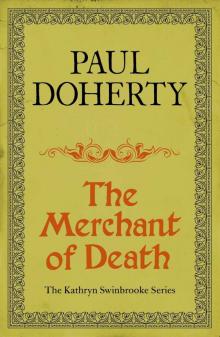 The Merchant of Death
The Merchant of Death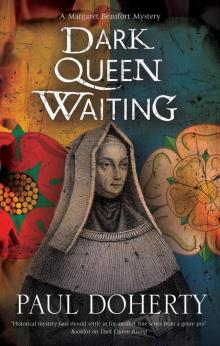 Dark Queen Waiting
Dark Queen Waiting Devil's Wolf
Devil's Wolf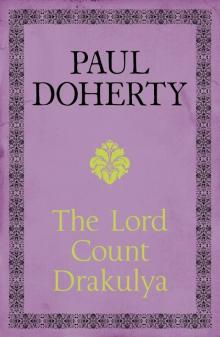 The Lord Count Drakulya
The Lord Count Drakulya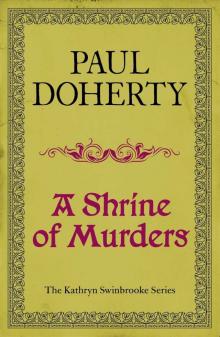 A Shrine of Murders
A Shrine of Murders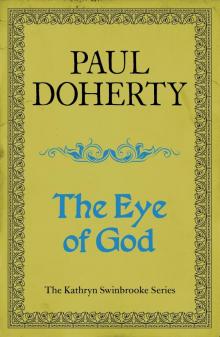 The Eye of God
The Eye of God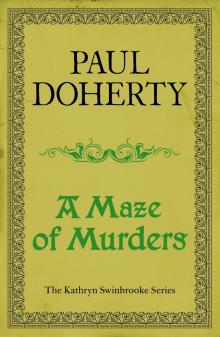 A Maze of Murders
A Maze of Murders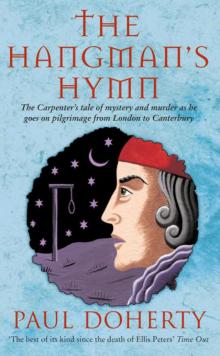 The Hangman's Hymn
The Hangman's Hymn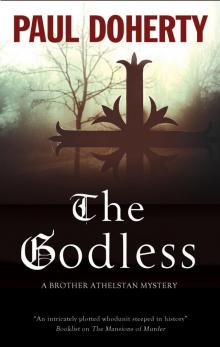 The Godless
The Godless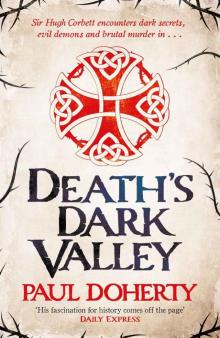 Death's Dark Valley
Death's Dark Valley Queen of the Night ar-4
Queen of the Night ar-4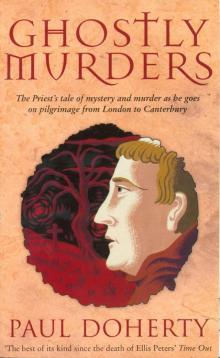 Ghostly Murders
Ghostly Murders Saintly Murders
Saintly Murders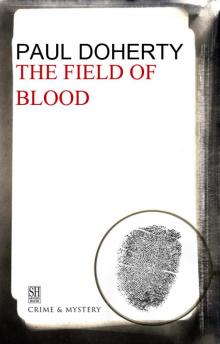 The Field of Blood
The Field of Blood Hugh Corbett 10 - The Devil's Hunt
Hugh Corbett 10 - The Devil's Hunt Assassin in the Greenwood hc-7
Assassin in the Greenwood hc-7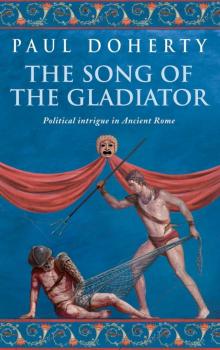 The Song of the Gladiator
The Song of the Gladiator Hugh Corbett 17 - The Mysterium
Hugh Corbett 17 - The Mysterium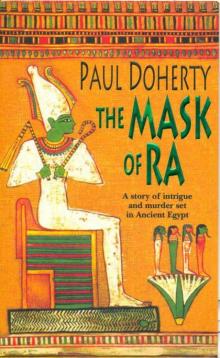 The Mask of Ra
The Mask of Ra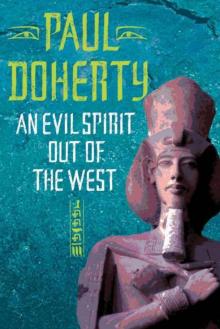 An Evil Spirit Out of the West (Ancient Egyptian Mysteries)
An Evil Spirit Out of the West (Ancient Egyptian Mysteries)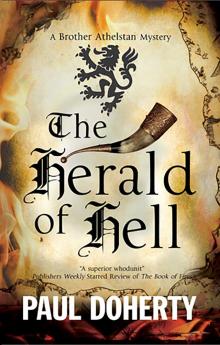 Herald of Hell
Herald of Hell Mathild 03 - The Darkening Glass
Mathild 03 - The Darkening Glass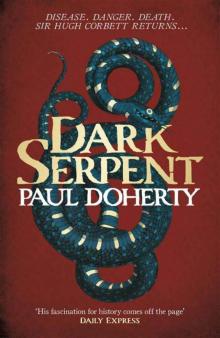 Dark Serpent (Hugh Corbett 18)
Dark Serpent (Hugh Corbett 18)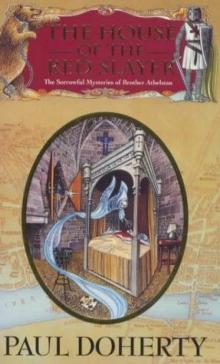 House of the Red Slayer smoba-2
House of the Red Slayer smoba-2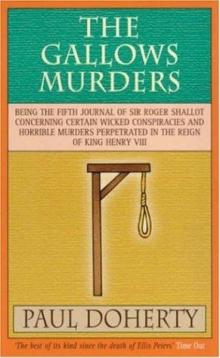 The Gallows Murders
The Gallows Murders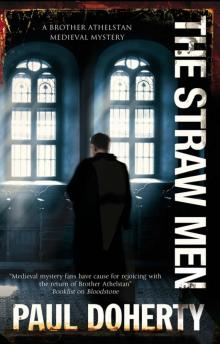 The Straw Men
The Straw Men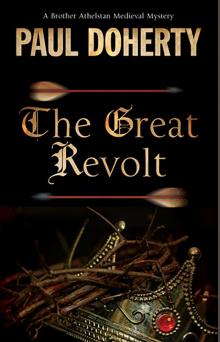 The Great Revolt
The Great Revolt The Rose Demon
The Rose Demon By Murder's bright light smoba-5
By Murder's bright light smoba-5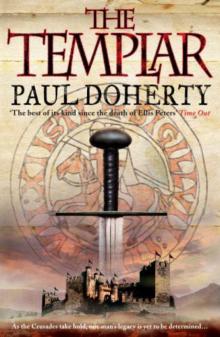 Templar
Templar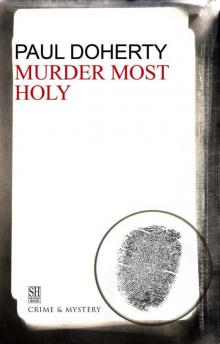 Murder Most Holy
Murder Most Holy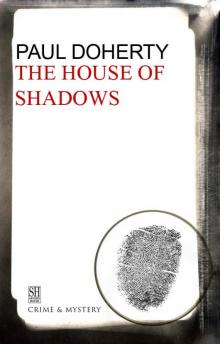 The House of Shadows
The House of Shadows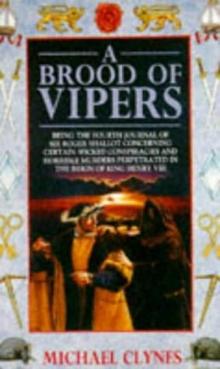 A Brood of Vipers srs-4
A Brood of Vipers srs-4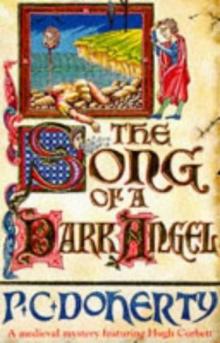 Song of a Dark Angel hc-8
Song of a Dark Angel hc-8 Satan in St Mary hc-1
Satan in St Mary hc-1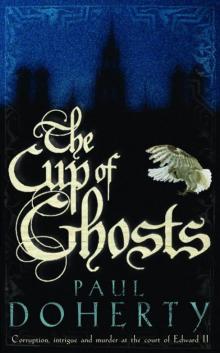 Mathilde 01 - The Cup of Ghosts
Mathilde 01 - The Cup of Ghosts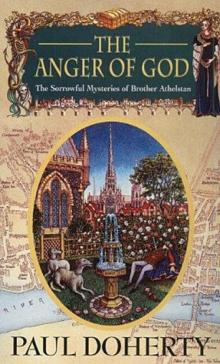 The Anger of God smoba-4
The Anger of God smoba-4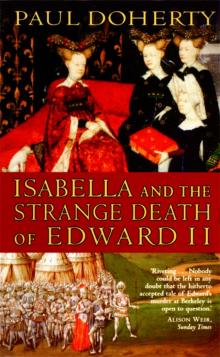 Isabella and the Strange Death of Edward II
Isabella and the Strange Death of Edward II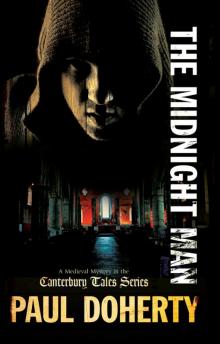 The Midnight Man ctomam-7
The Midnight Man ctomam-7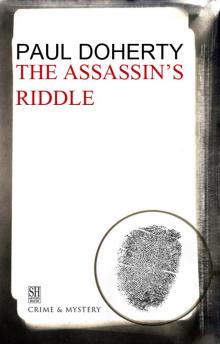 The Assassin's Riddle
The Assassin's Riddle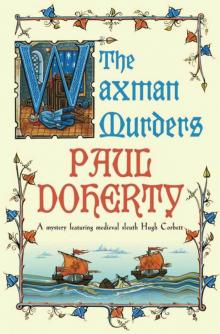 Hugh Corbett 15 - The Waxman Murders
Hugh Corbett 15 - The Waxman Murders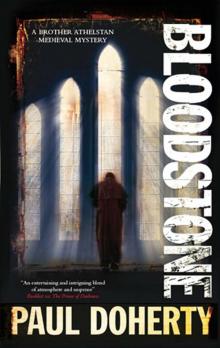 Bloodstone smoba-11
Bloodstone smoba-11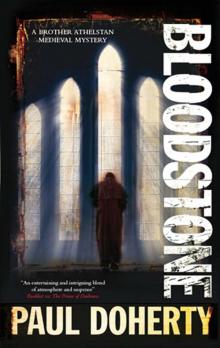 Bloodstone
Bloodstone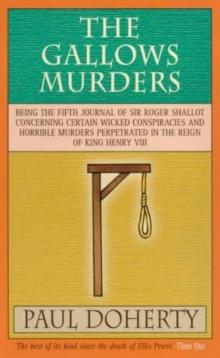 The Gallows Murders srs-5
The Gallows Murders srs-5 The Midnight Man
The Midnight Man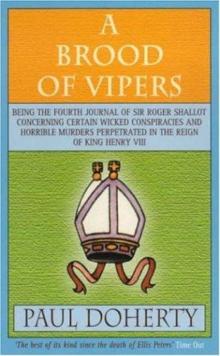 A Brood of Vipers
A Brood of Vipers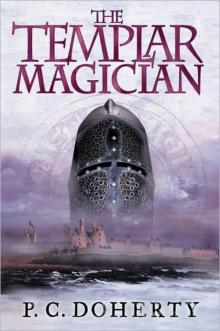 The Templar Magician
The Templar Magician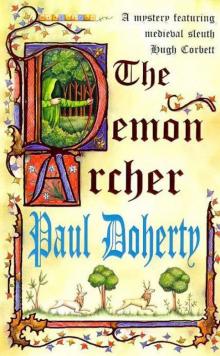 Hugh Corbett 11 - The Demon Archer
Hugh Corbett 11 - The Demon Archer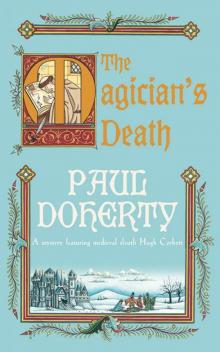 Hugh Corbett 14 - The Magician's Death
Hugh Corbett 14 - The Magician's Death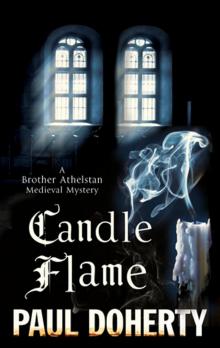 Candle Flame
Candle Flame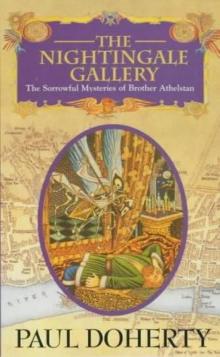 The Nightingale Gallery smoba-1
The Nightingale Gallery smoba-1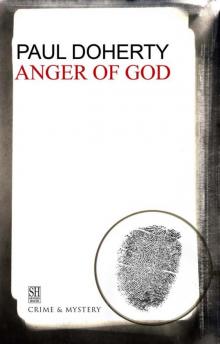 The Anger of God
The Anger of God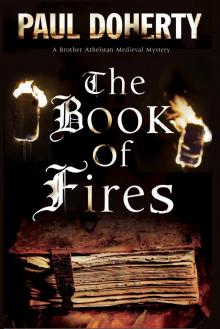 The Book of Fires
The Book of Fires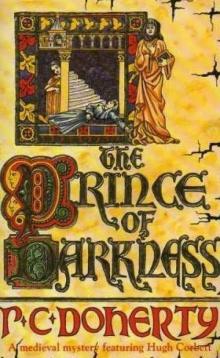 Prince of Darkness hc-5
Prince of Darkness hc-5 The House of Crows smoba-6
The House of Crows smoba-6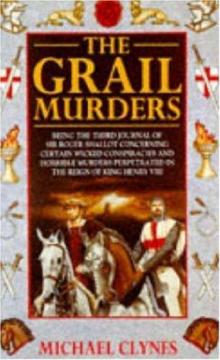 The Grail Murders
The Grail Murders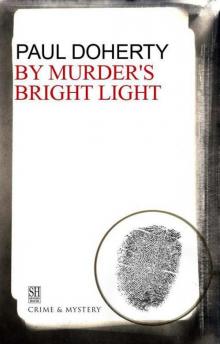 By Murder's Bright Light
By Murder's Bright Light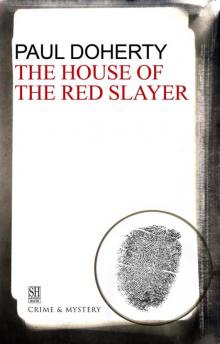 House of the Red Slayer
House of the Red Slayer The Devil's Domain
The Devil's Domain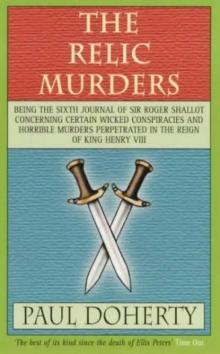 The Relic Murders srs-6
The Relic Murders srs-6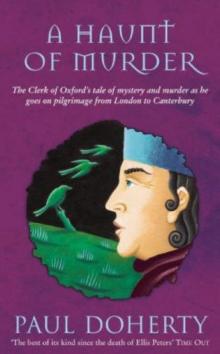 A haunt of murder ctomam-6
A haunt of murder ctomam-6 The Straw Men smoba-12
The Straw Men smoba-12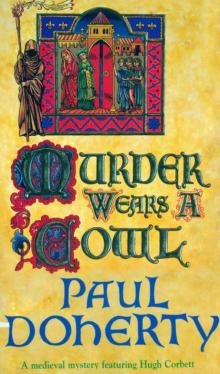 Hugh Corbett 06 - Murder Wears a Cowl
Hugh Corbett 06 - Murder Wears a Cowl An Ancient Evil (Canterbury Tales Mysteries)
An Ancient Evil (Canterbury Tales Mysteries)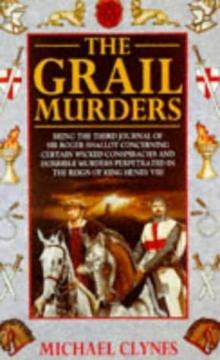 The Grail Murders srs-3
The Grail Murders srs-3 The Fate of Princes
The Fate of Princes The poisoned chalice srs-2
The poisoned chalice srs-2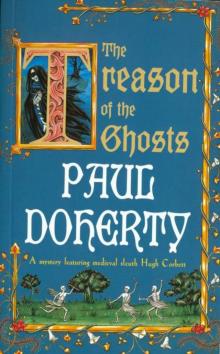 Hugh Corbett 12 - The Treason of the Ghosts
Hugh Corbett 12 - The Treason of the Ghosts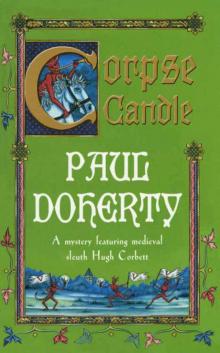 Hugh Corbett 13 - Corpse Candle
Hugh Corbett 13 - Corpse Candle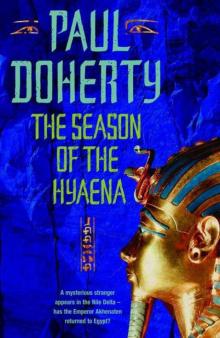 The Season of the Hyaena (Ancient Egyptian Mysteries)
The Season of the Hyaena (Ancient Egyptian Mysteries)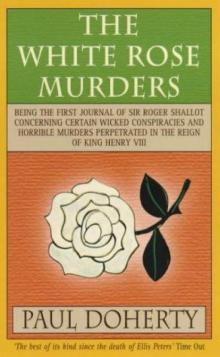 The White Rose murders srs-1
The White Rose murders srs-1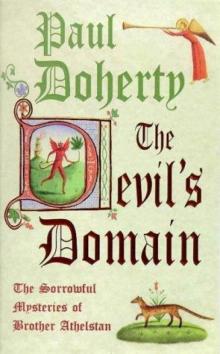 The Devil's domain smoba-8
The Devil's domain smoba-8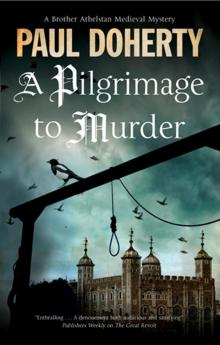 A Pilgrimage to Murder
A Pilgrimage to Murder Roseblood
Roseblood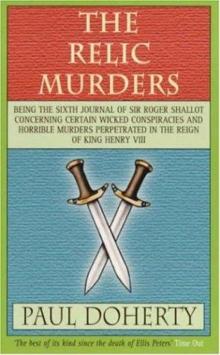 The Relic Murders
The Relic Murders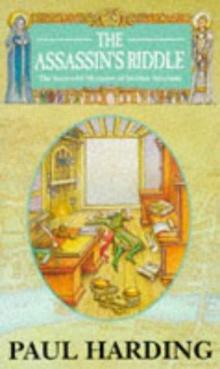 The Assassin's riddle smoba-7
The Assassin's riddle smoba-7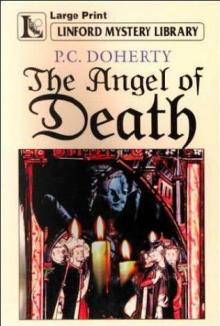 Angel of Death hc-4
Angel of Death hc-4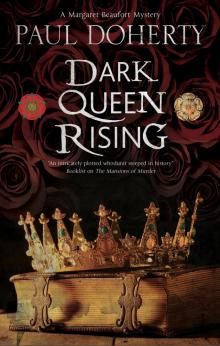 Dark Queen Rising
Dark Queen Rising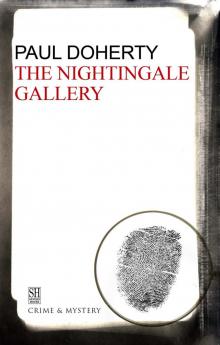 The Nightingale Gallery
The Nightingale Gallery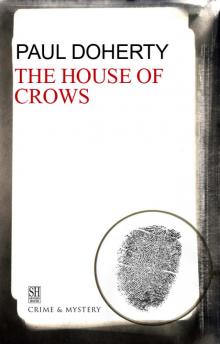 The House of Crows
The House of Crows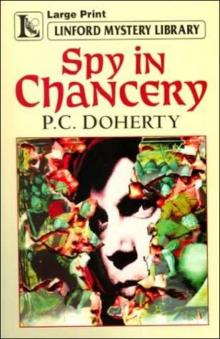 Spy in Chancery hc-3
Spy in Chancery hc-3